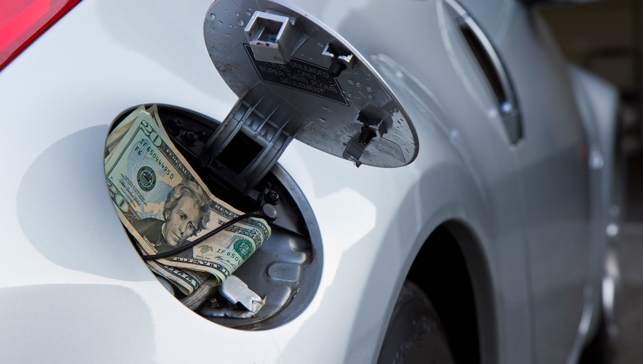“Won’t you get hip to this timely tip: When you make that California trip, get your kicks on Route 66.” – Bobby Troup, “(Get Your Kicks on) Route 66”
Coinciding with inflation rising faster than it has in 13 years, the cost of driving in California will inflate again on July 1, when the next round of motor fuel excise tax increases takes effect. The kicks we’ll be getting won’t be the joy of driving but boots on our backsides every time we fill up.
The coming tax hike, the third July 1 gasoline tax increase in a row following November 2017’s 12-cents-a-gallon surge, is a small increase, only 0.6 cents a gallon. But overall, drivers will be paying 21 cents more in state taxes per gallon than they were four years ago, when Senate Bill 1 was passed. The objective of SB1 was to raise $52 billion over 10 years to repair the state’s road-and-highway crackup, but things have not worked out as promised. Progress is lagging. The phrase “you get what you pay for” never applies to taxation, especially in California.
Before the July increase, California already had the highest state taxes on gasoline and diesel in the country, according to the American Petroleum Institute. Once June is over, combined state gasoline taxes will be 64 cents a gallon. Diesel fuel taxes, including the July 1 hike, will be more than 83 cents a gallon.
Almost all of us who have a California driver’s license feel that it doesn’t seem so long ago that the retail price of a gallon of gasoline was not much higher than the total of today’s state and federal taxes, about 82 cents a gallon. As recently as late 2001, we could buy a gallon of gasoline for about $1.10.
Today, thanks to the combination of taxes and special fuel blends unique to, and regulated by, the state, Californians pay more for gasoline than anyone else in the country, $4.24 a gallon for regular, $4.42 for mid-grade, and $4.55 for premium, according to AAA‘s Monday report. At $4.20 a gallon in California, diesel is more expensive only in Hawaii.
Anyone thinking that with a motor fuel tax regime that was consistently among the highest in the country before SB1, California could have fixed its broken streets, roads, highways, and bridges without adding to the tax burden would be correct.
“The truth is we have plenty of money to meet the need if the money were spent for its intended purposes,” Jon Coupal, president of the Howard Jarvis Taxpayers Association recently wrote. But due to “gross misspending, waste and diversion of gas tax revenues into projects having nothing to do with roads or highways,” infrastructure has been neglected.
For instance, Caltrans, which at one time said its “main role was to build highways,” admitted in its 2021 State Highway System Maintenance Plan that it has increased its “investment in bicycle and pedestrian transportation modes to help achieve climate goals and provide more equity in transportation system access.”
So fuel taxes are raised to repair roads, and the poorest among us, who spend about 29% of their incomes for transportation while the rest of us spend about 13%, are hurt the most. As has become the case in so many other instances, the California Way is the wrong way.
Kerry Jackson is a fellow with the Center for California Reform at the Pacific Research Institute.

